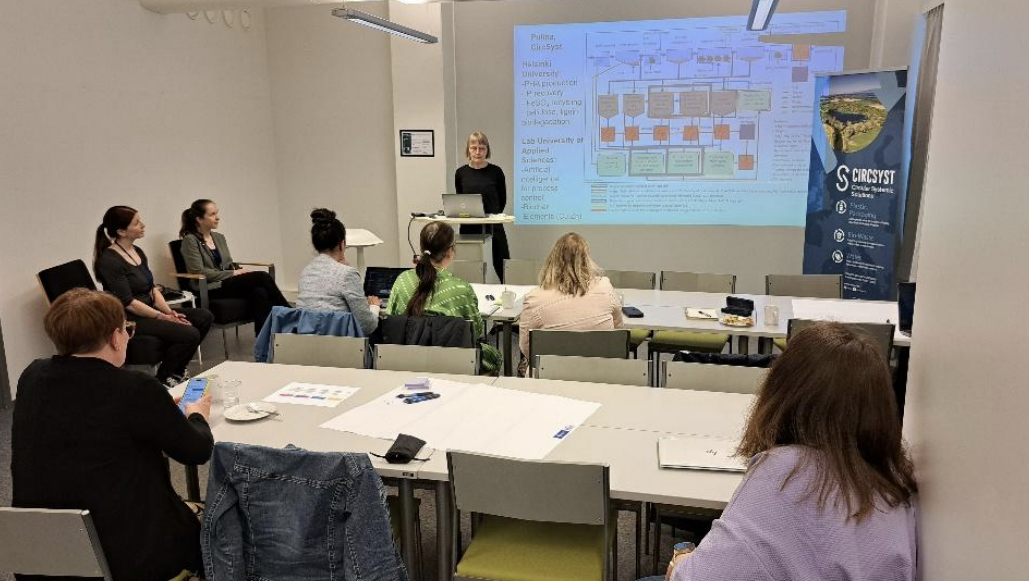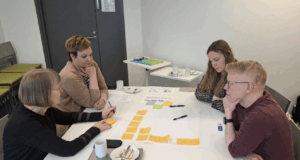Building Bioplastic Value Chains in Päijät-Häme – Workshop for Circular Solutions
Article written by Riikka Savijärvi, RDI Specialist, LAB University of Applied Sciences
The CircSyst project was also presented at the workshop, which focused on bioplastic production and shaping the circular economy of the future.

Bioplastic Value Chains in Päijät-Häme The CircSyst, HUUMA, and PULINA projects brought together stakeholders in the field to discuss the recycling of organic materials into raw materials for bioplastics at Lahti Science Park on May 27, 2025.
The workshop envisioned future circular economy solutions and considered the significance of local bioplastic production value chains for the Päijät-Häme region. One key opportunity highlighted was the expansion of bioplastic use into various product categories, especially high value-added products. Examples of products where biomaterials could add value and distinctiveness include: furniture, clothing, and coffins. Additionally, the long lifespan or symbolic value of such products can justify higher costs, which was identified as one bottleneck in mainstreaming bioplastics. Currently, for example, the production of PHA is significantly more expensive than comparable fossil-based plastic raw materials. As noted in the discussions, it is clear that without profitability and financial incentives, development will not progress. Technical uncertainty may also slow down the adoption of bioplastics.
The workshop considered, for instance, whether bioplastic granulates are sufficiently consistent in quality and meet all material requirements. Legislative uncertainty, raw material availability, lack of stakeholder commitment to the circular economy, availability of skilled labor, and greenwashing were also mentioned as significant challenges to create value chains.

The future of bioplastics will not be determined by individual technological breakthroughs, but by how well the entire value chain will function – from raw material collection and preprocessing to product utilization and recycling. Päijät-Häme has a unique opportunity to serve as a model region where the circular economy is not just a goal but a practical operating model. When processes are seamlessly integrated, bioplastics can become not only an ecological but also an economically viable part of the future circular economy.
The ongoing projects (CircSyst, PULINA, and HUUMA) support this development by bringing together industry actors and demonstrating circular economy-based operating models.
